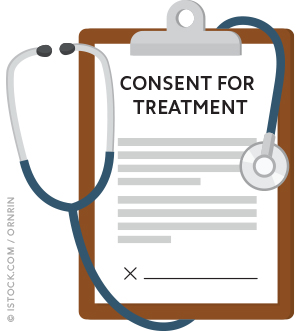
Fam Pract Manag. 2022;29(2):34
COAX PATIENTS WITH OUD BACK INTO THE OFFICE
Practices that transitioned to virtual visits early in the pandemic now may be struggling to convince some patients to return to the clinic. But it is vital to encourage those with opioid use disorder (OUD) to resume some in-person visits.
Our nation's OUD problem only got worse during the pandemic, with every state experiencing an increase in overdose deaths.1 In-person encounters allow physicians and other health care providers to better assess where OUD patients are in their recovery and identify stressors that may not be apparent over the phone or on a video call. Non-verbal cues and changes in dress or hygiene are all easier to identify in person.
Offering cab slips or bus passes may encourage patients who lack transportation to return to the office. Flexible scheduling, such as allowing every other visit to be virtual, and offering office hours early in the morning or after 5 p.m. can help patients who are afraid to miss work. Weekly group sessions are another option. Lastly, discussing the value of in-person visits with patients may also encourage them to come into the office. Make it clear that in-person visits are not to be viewed as “punishment” or a setback in their recovery, but rather a best practice that applies to all patients with OUD.
USE TEMPLATES FOR PATIENT CONSENT FORMS

Informed consent in medicine accomplishes several goals, including protecting patients' legal rights, supporting shared decision-making, and increasing cost efficiency by reducing unwanted treatment. It also helps establish trust between doctors and patients.1
Most health care organizations have a general consent form that patients sign at their first visit. This covers the majority of care that they receive, though separate consent forms may be needed for specific procedures.
If your organization does not have a standard form, or you're an independent practice, you can develop a template. A general consent form should include the patient's name and date of birth along with the patient's permission to perform routine services as well as authorization for emergency care if necessary. It should outline how your clinic shares personal health information (e.g., only via a secure portal, or via email or voicemail) and tell the patient that information on reportable diseases may be reported to public health authorities. If your practice includes medical students, you may want to include consent to have them present at visits as well.
The website JotForm has a number of medical consent form templates available, as well as a “Form Builder” function that allows users to customize templates.
GIVE OBJECTIVE STATEMENTS ABOUT WORK-RELATED INJURIES
In my practice, I have treated a number of people with work-related injuries, some of whom needed examinations for worker's compensation claims. Because I dictated my notes in front of the patient (this was in the days before electronic health records), I had to carefully word my comments and conclusions, especially for patients I suspected were exaggerating symptoms.
My solution was the phrase “The patient's subjective complaints were out of proportion to the objective findings.” I then documented this with statements such as “The patient complained of back pain but appeared to sit comfortably in a chair for 15 minutes and then got onto the exam table with no difficulty.”
My conclusions were rarely contested because I stayed away from giving personal opinions about the severity of the injury and instead documented objective observations. This strategy could be helpful to physicians who are required to share their electronic notes with patients as well.
